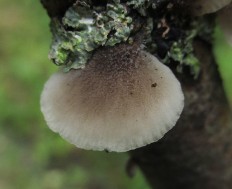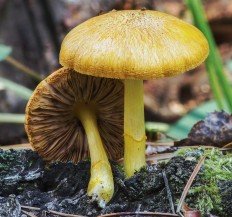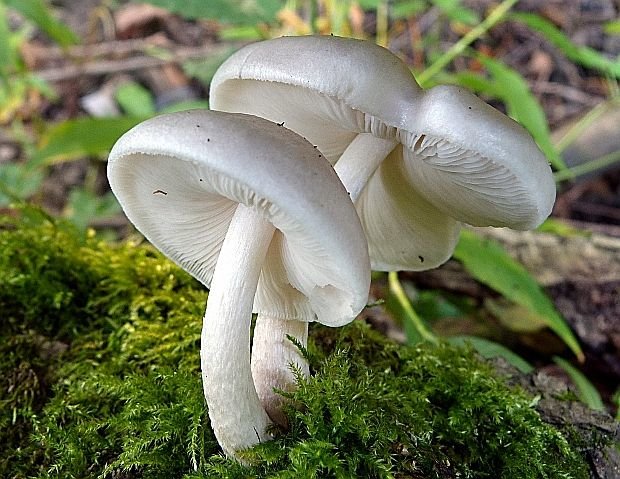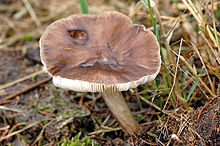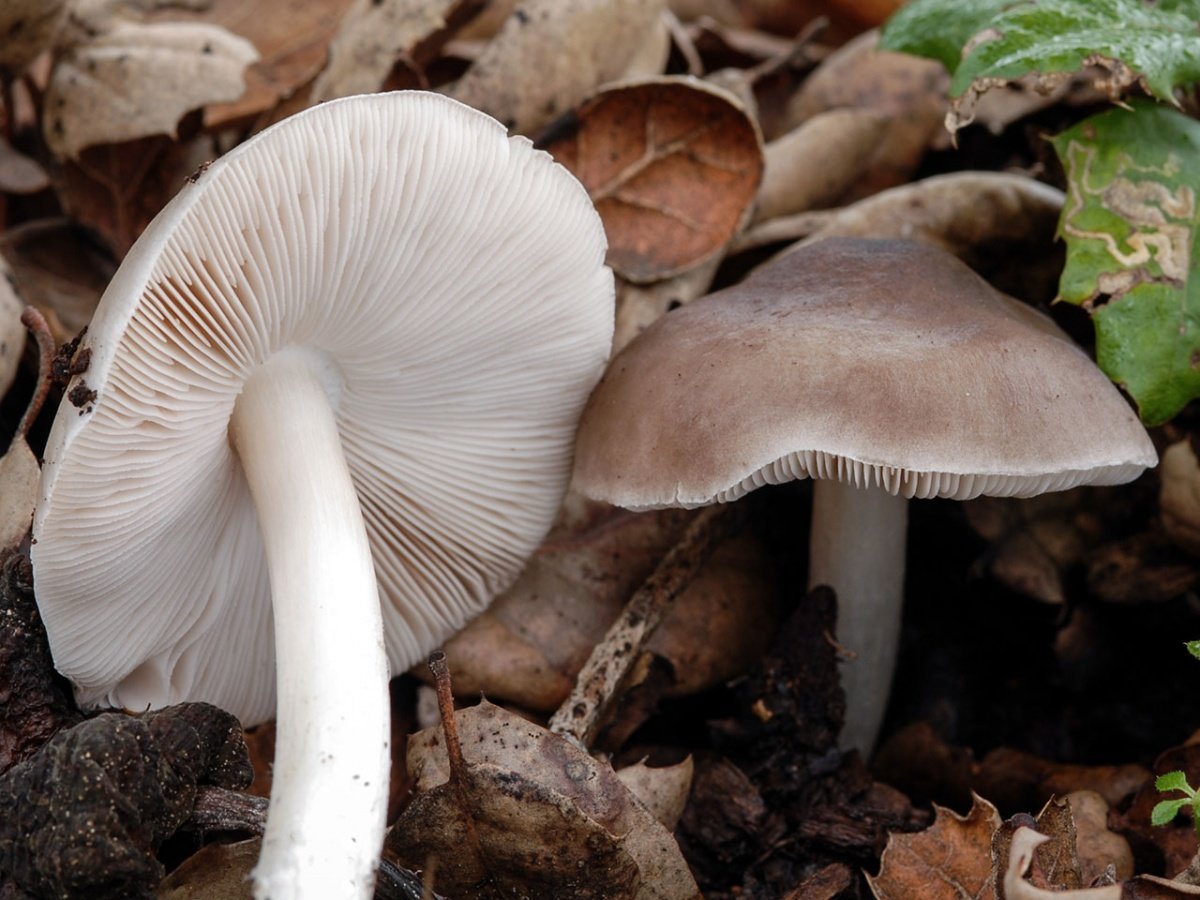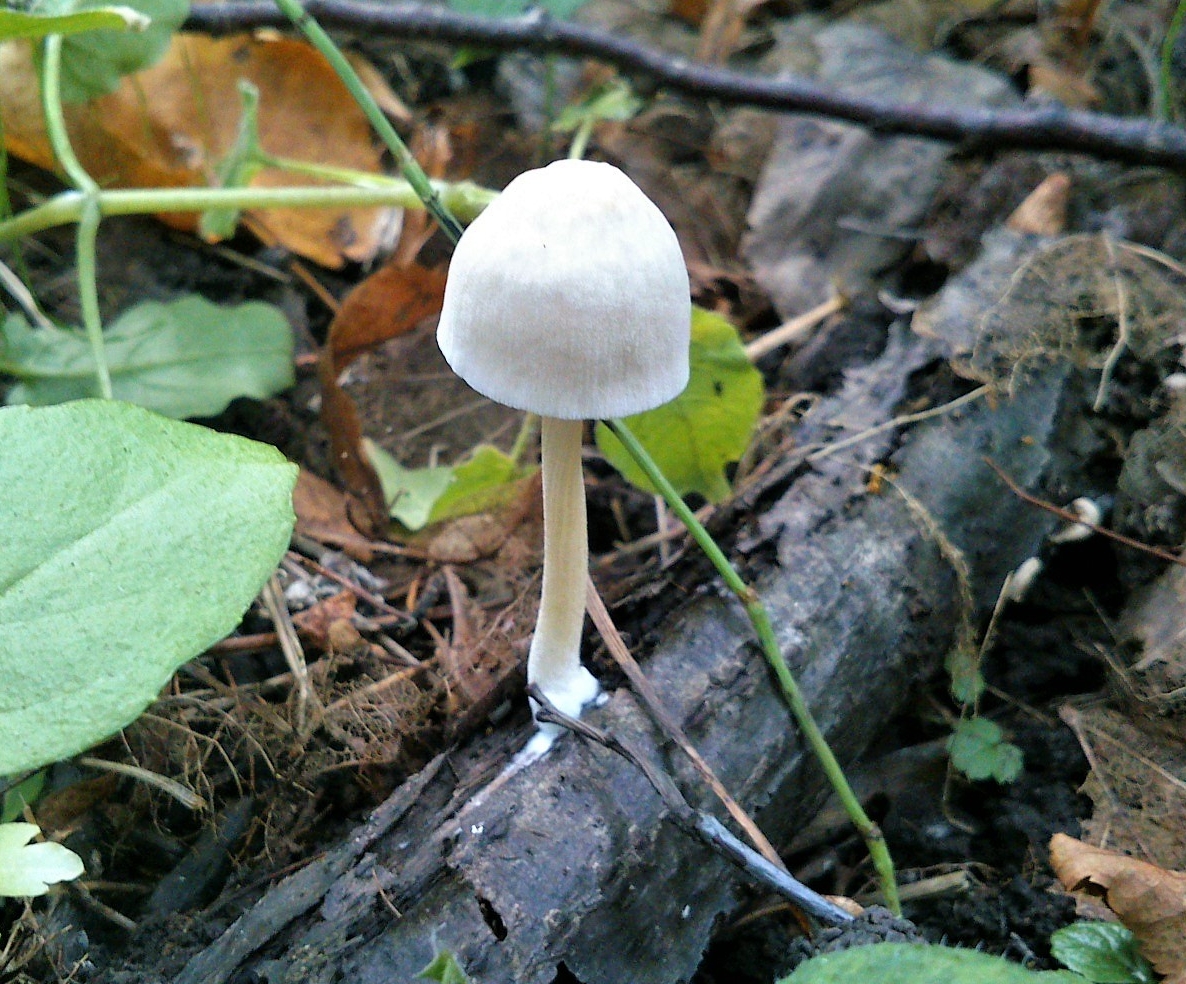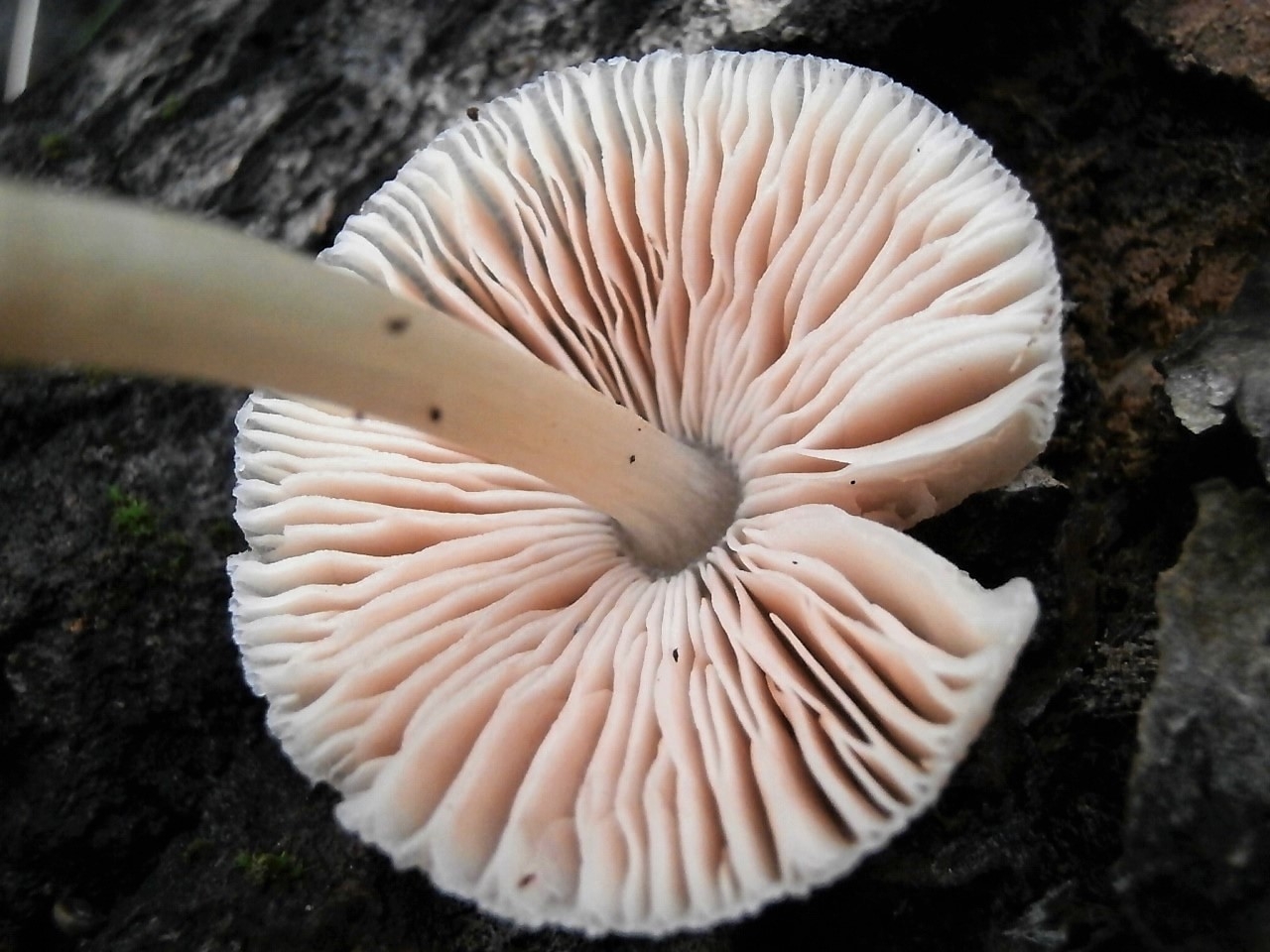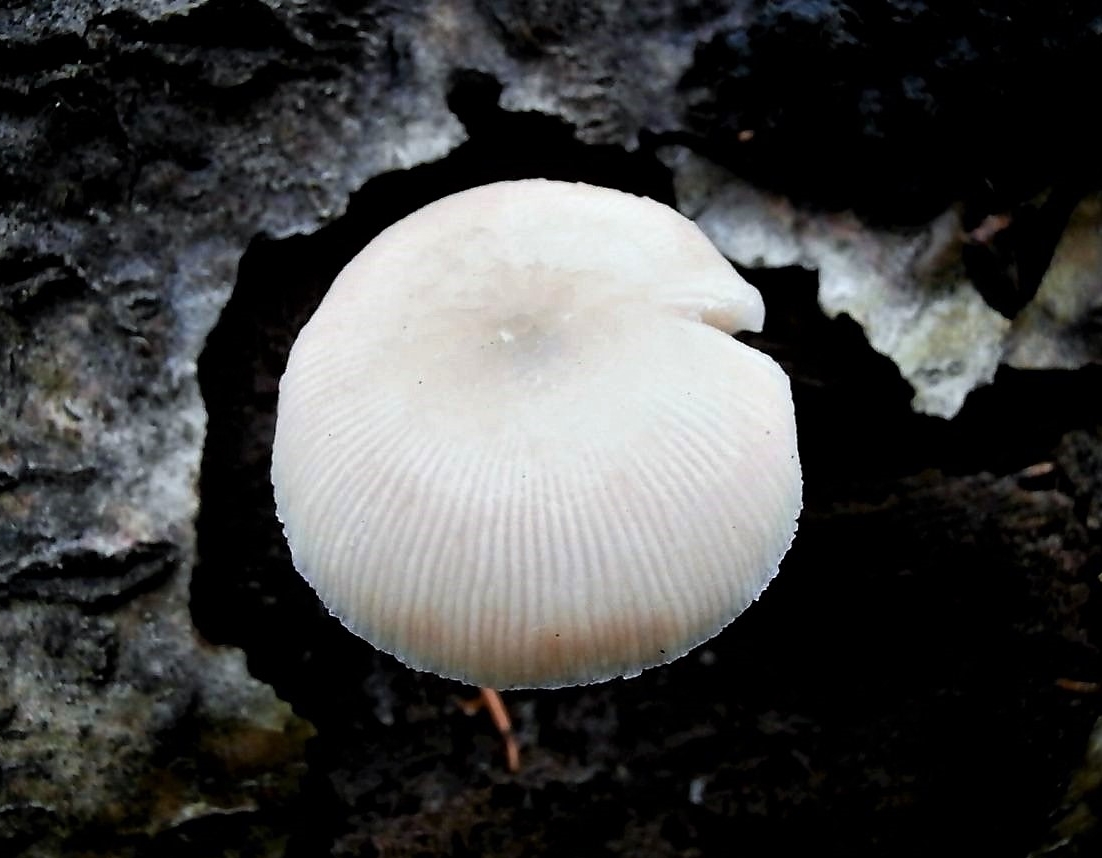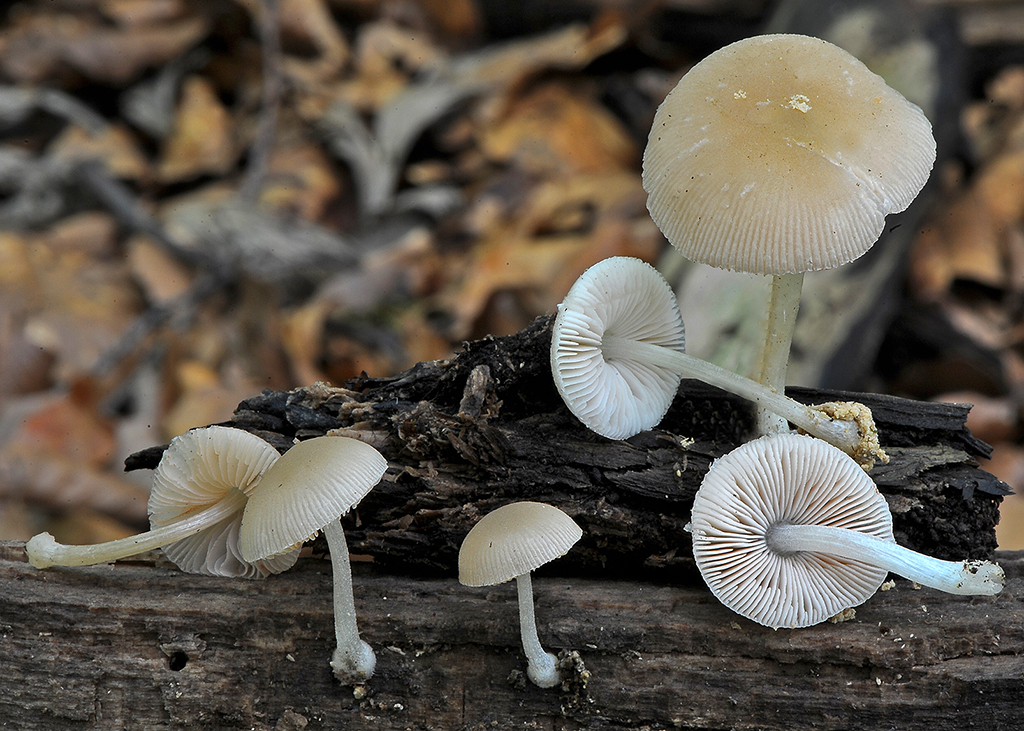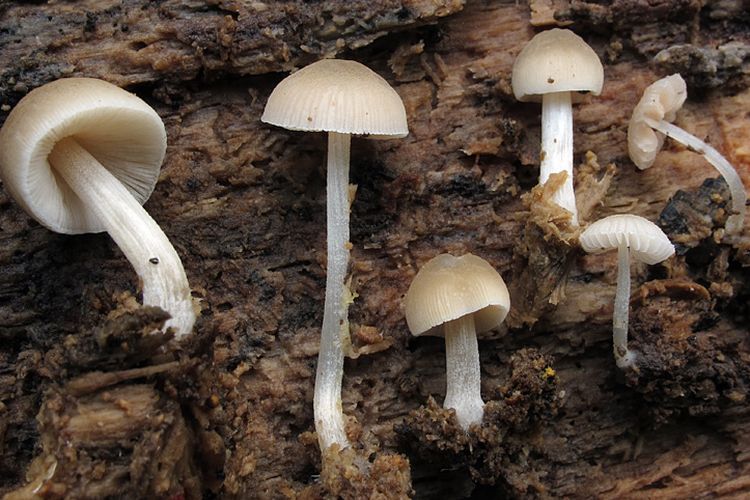Description
- Pluteus plautus sensu stricto
The hat is 3-6 centimeters in diameter, thin-fleshy, from semicircular or convex to flat-outstretched shape, with a small tubercle. The edge is thin, fibrous, distinctly grooved in large caps. The surface is velvety, later finely scaly, wrinkled, amber, brown or sandy-brown in color, darker in the center.
loose, wide, frequent, at first white, with age they become light pink with a whitish edge. There are plates.
Leg 2-6 × (0.2) 0.5-1 cm, cylindrical, central, dense, widened at the base. The surface is whitish, with a velvety coating or small punctate nut-brown scales.
The flesh of the cap is whitish or grayish, brownish in the stem, does not change on the cut, the taste is not pronounced, the smell is pungent, unpleasant, resembles the smell of comb lepiota (Lepiota cristata).
The remains of the bedspreads are absent, the spore powder is pink.
Spores are smooth, broadly ellipsoid, ellipsoid or ovoid, 6.5-9 × 6-7 microns.
The hyphae are thin-walled, without buckles, the caps in the skin are composed of cells of various shapes - cylindrical, fusiform or clavate, 45-150 × 10-25 microns, colorless or contain a yellowish-brown pigment.
Basidia are four-spore, 20-30 × 7-10 microns in size, clavate, colorless.
Cheilocystids are 28–70 × 12–38 µm in size, variable in shape - clavate, saccular, vesicular or bottle-shaped, thin-walled, colorless. Pleurocystids, 60-120 × 15-35 µm, fusiform, clavate or bottle-shaped, thin-walled, colorless or contain brownish pigment, with or without an apicular appendage up to 15 µm.
Taxonomy
- Synonyms
- Agaricus plautus Weinm. 1836 basionym
- Pluteus granulatus Bres. 1881 - Grainy rogue
- Pluteus pellitus var. gracilis Bres. 1885
- Pluteus gracilis (Bres.) J.E. Lange 1936 - Graceful rogue
- Pluteus alborugosus Kühner & Romagn. 1953
- Pluteus depauperatus Romagn. 1956
- Pluteus boudieri P.D. Orton 1960
- Pluteus dryophiloides P.D. Orton 1969
- Pluteus punctipes P.D. Orton 1960
- Pluteus hiatulus sensu auct.
- Homonyms
Pluteus plautus sensu Pearson (1952) is a synonym for Pluteus ephebeus (Fr.) Gill. 1876 - Scaly clown
The volume of the species is taken differently by different authors. E. Wellinga described Pluteus plautus sensu lato in 1990; in a broad sense, the species is also represented on the Species Fungorum website. A number of researchers some of the synonyms indicated by Wellinga (P. boudieri, P. granulatus, P. depauperatus, P. dryophiloides, P. punctipes) are taken as the names of independent, fairly well-limited species.
Similar species
- Tuberous rods (Pluteus semibulbosus) (Wellingoy and some other authors are included in synonyms Pluteus plautus) differs in microscopic features and grows only in deciduous forests.
- Authors recognizing grainy rogue (Pluteus granulatus) as a separate species, the following differences are indicated: the lighter color of the cap and the granular nature of the scales on it, there are differences in microscopic features, the smell of pulp is absent, it grows in coniferous and deciduous forests. The cap is 2-7 cm in diameter, bell-shaped, convex-prostrate with age, with a tubercle, thin-fleshy, striped along the edge. The surface is yellowish-brownish or sandy, with brown or black-brown granular scales in the center. Leg 4-7 × 0.3-0.7 cm, at the base up to 1 cm, whitish, brown at the base, fibrous, often with small brown scales. The pulp is whitish, grayish along the edges of the fruiting body, tasteless and odorless. Spores 7-8.6 × 6-7 µm, broadly ellipsoid or nearly spherical. The cells of the hyphae in the skin of the cap are fusiform or clavate, 100–180 × 15–30 µm in size. Cheilocystids 40–70 × 15–30 µm. Pleurocystids 60–80 × 15–25 µm, bottle-shaped. It is rare, common in some areas, grows on wood debris or on the soil near tree roots in August - October. It is known in Europe, in Russia it is noted in the Murmansk and Samara regions ..
- Morphologically close species to Pluteus granulatus indicate Pluteus depauperatus and Pluteus dryophiloidesgrowing only in beech forests, they differ in the nature of the surface of the cap and microscopic features.

